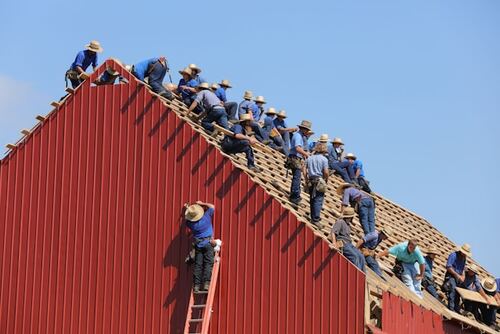Have you ever wondered how materials shape modern architecture? As people explore innovative designs and cutting-edge construction techniques, one material that continues to stand out is wood. In particular, beams made of wood play a unique role in contemporary architecture. These structures are in some of the most stunning modern designs.
When people think about architecture today, it’s impossible to overlook the resurgence of timber beams in building designs. Whether it’s the warmth they provide or their undeniable strength, these wooden elements are reshaping both residential and commercial spaces. Architects love using wood for its ability to blend tradition with innovation, creating functional and aesthetically pleasing environments. But how do these structures impact modern design, and what makes them essential to contemporary architecture?
The Aesthetic Appeal of Wood in Modern Design
One of the primary reasons wood continues to be popular is its visual appeal. Wood’s natural grain and texture bring warmth and elegance to any space. It has a timeless quality, effortlessly complementing various design styles. In contemporary architecture, beams made from wood are often used to create a striking contrast against sleek, minimalist interiors. This balance between natural and modern elements adds depth and character to any building, making it stand out.
Versatility and Customisation
They are incredibly versatile. They can be tailored to various architectural styles, from rustic farmhouses to ultra-modern homes. This adaptability allows architects to use them in diverse ways, whether as an exposed ceiling beam or a structural component of a large commercial building. This level of customisation makes them a favoured choice among designers looking to bring unique visions to life.
Strength and Durability
While wood is admired for its beauty, it is equally valued for its strength. Modern construction techniques ensure that beams are durable and long-lasting. When treated and maintained correctly, they can withstand weather conditions and resist decay. This durability is a crucial reason architects trust it in contemporary design, as it ensures longevity without compromising aesthetics. Timber beams, for instance, are often reinforced to provide the necessary structural support while retaining their natural charm.
Cost-Effective Construction Material
Cost is always a factor in building projects and offers a practical solution. Compared to other materials like steel or concrete, wood is often more affordable and more accessible to work with. Its lightweight nature also reduces transportation and labour costs. The ability to install it quickly further drives down construction time and expenses. This cost-effectiveness is a significant advantage in both residential and commercial projects.
Acoustic and Thermal Properties
Another advantage is their excellent thermal and acoustic properties. Wood naturally insulates, helping maintain stable indoor temperatures, which can reduce energy consumption in heating and cooling systems. Additionally, structures provide sound absorption, making spaces quieter and more comfortable. It makes them ideal for buildings where energy efficiency and acoustic quality are essential, such as homes, offices, and schools.
Creating Open Spaces with Wood
Modern architecture often emphasises open floor plans and large, airy spaces. Wood is a critical player in achieving this look. Its ability to span long distances without excessive support columns allows architects to create spacious, open areas that feel spacious and inviting. They add structural integrity while contributing to a sense of openness and flow within the design.
Timber beams significantly impact contemporary architecture due to their versatility, strength, and natural beauty. Its ability to balance tradition with modern innovation ensures that wood will remain a vital architectural element for years. Whether for their structural integrity or timeless elegance, these wooden structures are here to stay, shaping the future of architecture one building at a time.



